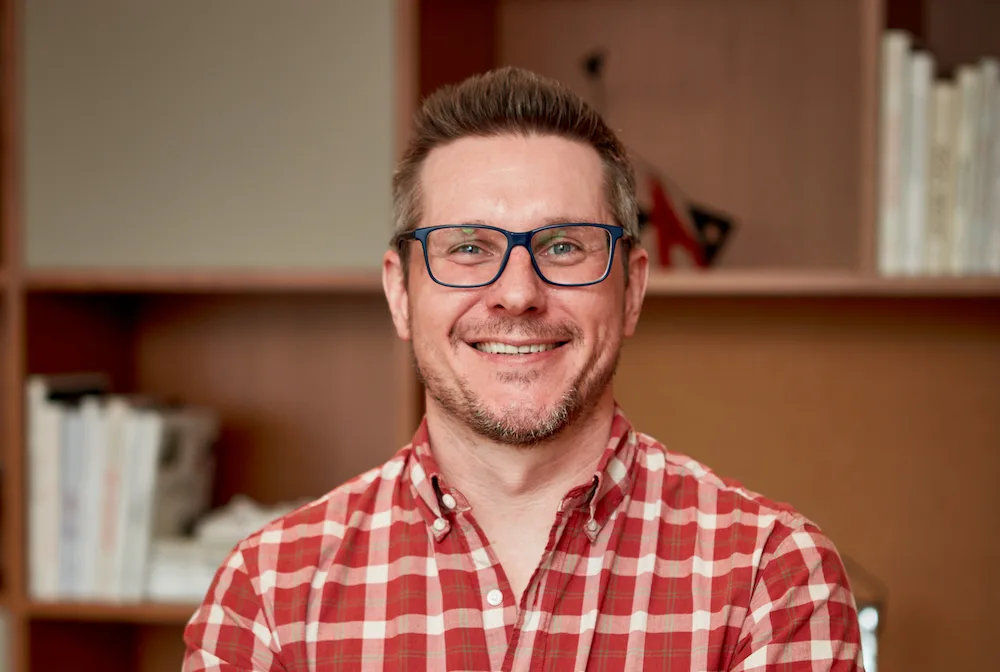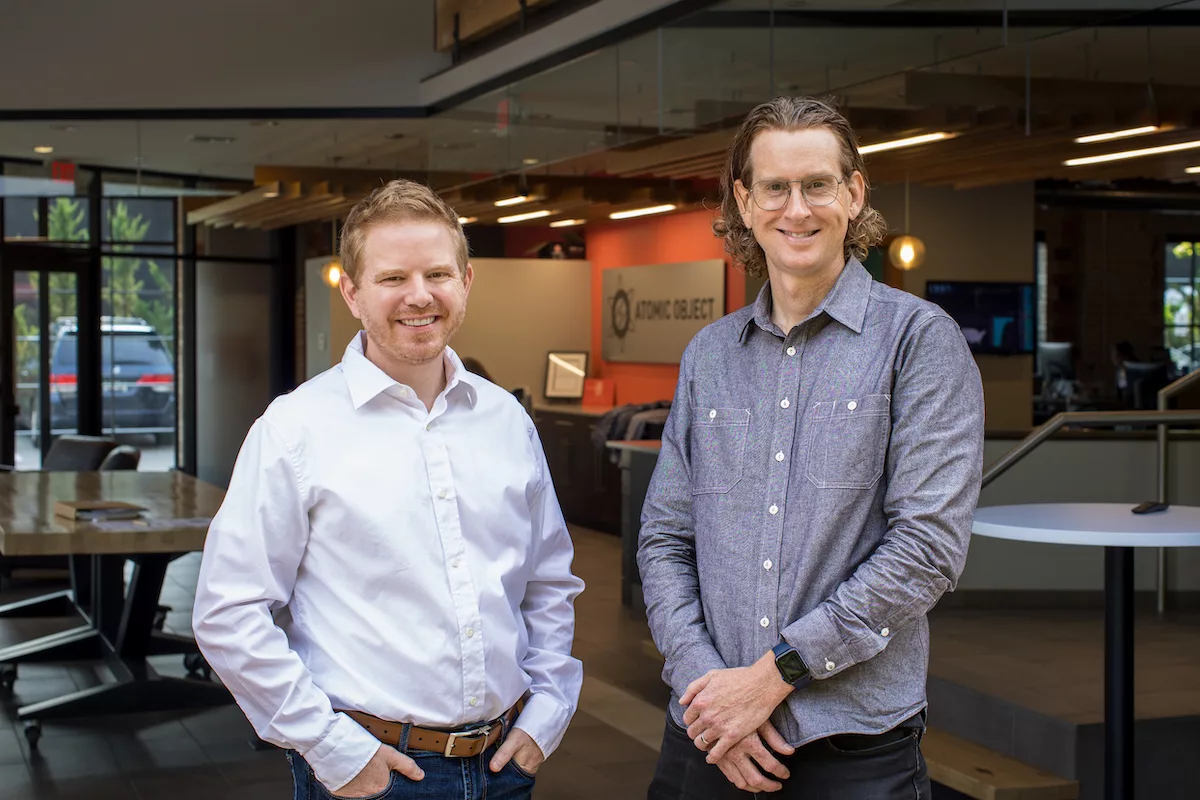Many people believe “If you build it, they will come.” But that’s almost never the case when it comes to building a venture. So, what does the journey from startup to first customer look like, and how do you become successful in the process?
In this edition of Venture unscripted., City Innovations CEO, Josh Barker, sat down with Dr. Mac Adkins, Founder and Chief Academic Officer of SmarterServices, to talk all about the journey from 0 to 1, what that journey looked like for their company, and the role entrepreneurs can play in the education space.
Listen to the podcast video below or keep scrolling to read the podcast recap.
Becoming an Entrepreneur
Entrepreneurship is critical to business, but not every company is started by someone who envisioned themselves becoming an entrepreneur.
“There was nothing in my DNA that made me think I wanted to be an entrepreneur,” Mac explained.
He initially thought he would go into optometry, but eventually realized that wasn’t the right fit. Evident in his results from the Gallup StrengthsFinder Assessment, he learned that he was an achiever. Knowing this helped early on as he began his journey as an entrepreneur.
Mac went on to earn a Ph.D. and work as a dean at a state university, but it was his mentor that challenged Mac to quit that position and start his own business.
“I could’ve had a good career as a dean and probably moved up to VP or even president of the university, and that’d have been great. But starting this company has been immensely professionally and personally rewarding,” Mac continued. “Expanding the scope of my influence nationwide in a way that never just working at one institution would have done.”
Breaking into EdTech
Mac’s journey to starting SmarterServices began during his time doing graduate work for a theological school, Amridge University.
While working at the university, the president heard about a program that was utilizing videotapes within higher education. Amridge then incorporated a similar process into their schooling.
“We were mailing out videotapes all over the country to these pastors at churches getting their education, and I was involved in starting that,” said Mac. “We thought that was the greatest educational technology that would ever be, but then the internet came out and that really changed everything.”
BlackBoard was one of the initial online-based learning management systems in EdTech — and Amridge was one of Blackboard’s first 10 clients. “So, I’ve been involved in eLearning since before the E,” Mac said.
Mac took his experience starting an online learning program and began working at Troy University. The university had campuses near 52 different military bases and would send faculty to the bases to teach. When the internet gained mass popularity, it became clear that utilizing it would be easier than sending teachers all over the country. Troy hired four people to start a distance learning program — now, it’s one of the largest state universities.
Mac served as the Dean of Distance Learning for about a decade there. It was at Troy University that he saw the need for services that his current company, SmarterServices, offers.
The Start of SmarterServices
SmarterServices offers two main services. One is SmarterMeasure — an assessment that quantifies learner readiness. Overall, it is a test that helps people know if distance learning is a good fit based on non-cognitive traits, attributes, and skills. It assesses motivation, procrastination, willingness to ask for help, technology competency, reading ability, and more.
“I saw the need because it was really easy to recruit people into an online program but harder to keep them,” Mac explained. “They were dropping out because they got in there and realized it was hard to do.”
The other service they offer is called SmarterProctoring — a system that monitors students while they’re taking online tests.
But seeing a need doesn’t immediately translate into starting a business. Mac had a day job. In addition to being a dean, he also owned an accounting practice. But there was a big need for these two services in higher education. So he approached the Dean of the College of Business at Troy for some advice.
“I went to him and I said, ‘How do you do this? How do you keep your day job but have a side gig?’” Mac explained.
The dean has suggested that Mac use different colored pens to denote what was university work and what was personal work, to ensure that state resources were kept separate from promoting a personal company. Another piece of advice was making sure that Troy University could benefit from the personal project.
“He said to get a memorandum of understanding and establish that Troy has a perpetual, free license to it if they want,” Mac explained.
Mac didn’t leave his day job at Troy for another eight years, but by the time he did, he had several employees at SmarterServices.
Becoming an Ed-Entrepreneur
“I call myself an ed-entrepreneur — an educator and an entrepreneur — which is a little bit of an oxymoron because educators aren’t typically aggressive enough to become an entrepreneur. Or they’re not risk-taking enough,” Mac explained.
Mac admits that in the beginning, he didn’t have a risk-taking mindset either. He didn’t want to just quit his day job.
“I was scared enough that I didn’t want to take a lot of investment money upfront and owe other people,” Mac explained. “So, I literally [bootstrapped] it for all those early years and just hired people only when I had the money to hire them. I didn’t take any investments until 15 years into the company’s history.”
SmarterServices started with an RFP for the United States Army. In the early days of online learning, the Army had a program called E Army U, where they were sending a lot of soldier students to continue their education online. The Army realized that they needed to help students understand whether eLearning was a good fit for them. So they put out a request for proposals to develop an assessment for their program.
Mac responded to the RFP and created the first version of SmarterServices, which was done on paper. This project led to other opportunities for partnerships and expanding on the product, which led to the first online version being implemented with students at Troy University.
“We were getting some really good feedback from students and it seemed to be measuring things that mattered,” Mac explained. “So, I created a presentation about it.”
Mac presented his solution during a conference hosted by the Southern Association of Colleges and Schools. And once finished, multiple people approached Mac wanting to know if he could sell them the program for their institutions.
“The very first client was Columbus State,” Mac said. “They used it and saw it go through several evolutions. I perfected that need at a small scale and then told others about it.”
Mac would use his days off from his day job to sit on his back porch and become a salesperson for a day — sitting down and calling a list of potential clients from the conference.
“I made a little money from it and I was like, ‘Wow, there may be something here,’” he said.
The Evolution of E-Learning
But It wasn’t all smooth sailing in the early days of SmarterServices.
“All the conversations in those days centered around whether eLearning was for real. Can you really learn this way?” Mac said. “And while everyone else was busy thinking about that, I was thinking about who‘s a good fit and who’s not [for SmarterServices]. It evolved.”
The first name of SmarterServices’ learner readiness assessment was “READI,” which stood for Readiness for Education at a Distance Indicator. Mac and his team quickly realized that as they were selling the assessment to schools and they were using it with students, the same traits that made one a good online learner often made someone a good learner in the class too. This prompted a name change and some revisions.
“All references to online learning were taken away, so it wasn’t delivery system independent,” Mac explained.
Now, the company has two primary services. But in their early days, the company rolled out about eight different services.
“Not everything you try is going to be a home run,” Mac said. “One of those I think was too early, and we were a little bit flawed in our concept. One of the things I struggled with as a Dean of Distance Learning and in the early days of distance learning as a whole, was that [online learning] was growing rapidly.”
At that time, it was difficult to find faculty who met the minimum requirements for online instruction and it would take hours to dig through hundreds of resumes. So, Mac created an online, database-driven solution called Faculty Finder that became very popular.
“At another conference a few years later, a guy comes up to me and says I’ve made him a very wealthy man,” Mac continued. Turns out, this man was a lawyer teaching a management law course online for several schools at the same time.
“That kind of thing is a little bit more regulated and frowned on now, but in the early days of the internet it was the wild west,” Mac explained. “The man literally closed his legal practice because he was making more money teaching that one online class and he was getting all those jobs through my platform.”
And while Faculty Finder had success and schools were utilizing it, it was almost too soon for a solution like it.
“In those days, this concept of having a searchable database just wasn’t registering for people,” Mac said. “And we had trouble monetizing. We couldn’t pay the people to create a profile, but we needed them and the network. At the same time, schools weren’t willing to pay us very much money, so we sunsetted it.”
“Everybody comes from a context and they’ll create solutions for that specific environment,” Mac explained. “Advice I would give other innovators is to try and think beyond your own environment. I was too limited in the scale of that specific solution and I missed a huge home run early in the days of the internet.”
Going from Idea to Reality
A good idea can quickly go from being a concept to becoming a reality. But realities have to be sold and supported.
“When you get to the point that [the company] grows beyond you, and you’ve got to hire your first employee, bet on the jockey,” Mac explained. “Hire someone that you know can do the work.”
Mac saved up enough that would fund one year of his first employee’s salary. He couldn’t promise what would happen after the end of that first year and that first employee, Julie Myers, ended up doing everything from sales, to customer support, graphic design, marketing, and more. And she’s still part of the SmarterServices team today.
The second employee hired at SmarterServices was crucial to the development of the products. The first iterations of SmarterServices weren’t nearly as smooth or reliable, and according to Mac, didn’t look good. The second employee hired was a developer that would come at a good rate but could do the work. That employee was Jason Fill. Now, Jason serves as Smarterservices’ CEO.
Today, SmarterServices has partnered with over 1,000 educational institutions and 6 million students nationwide to improve retention, assess learner readiness, provide proctoring, and decrease overall cheating incidents.
Continue Learning
Want to learn more? Listen to the full podcast below to hear more about how SmarterServices started, what their journey looked like, and advice for entrepreneurs in the education space.
To learn more about SmarterServices, click here to visit their website.
For more Venture unscripted. podcasts, click here.



